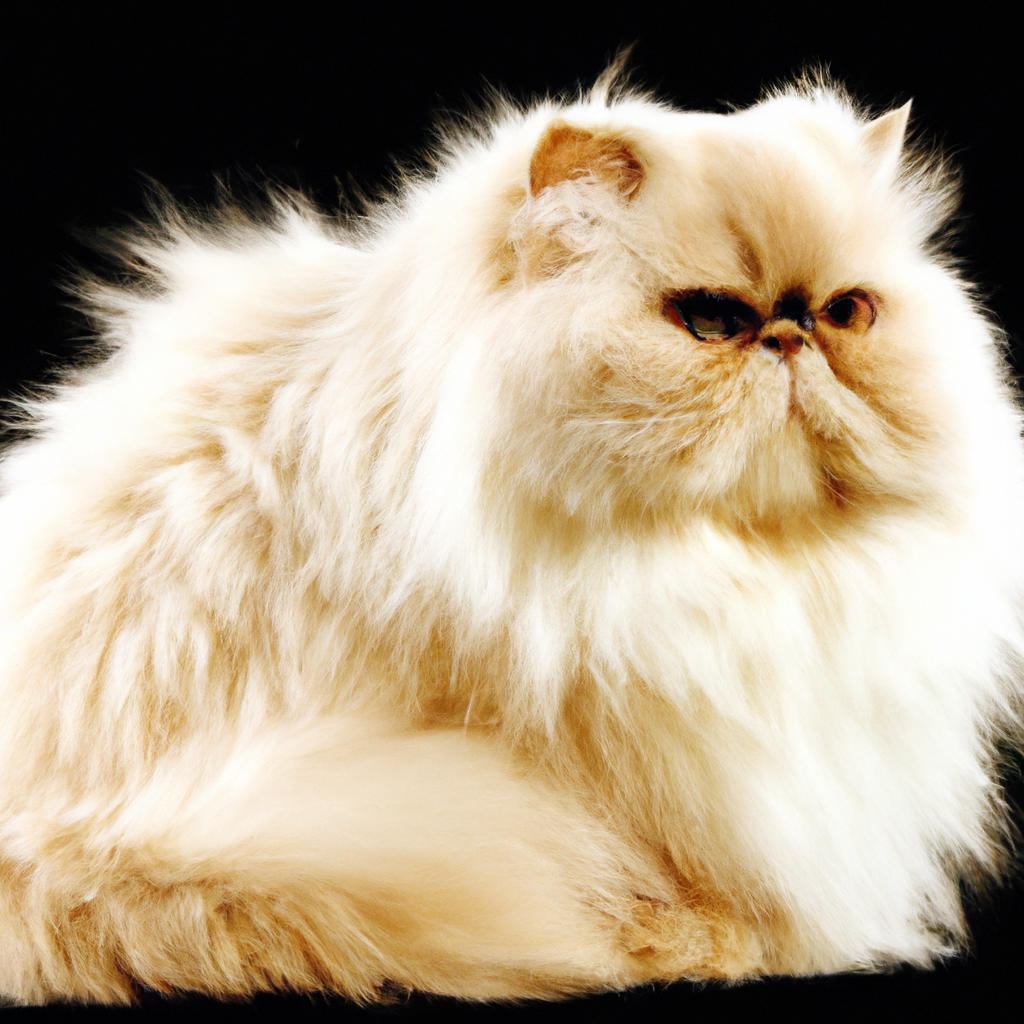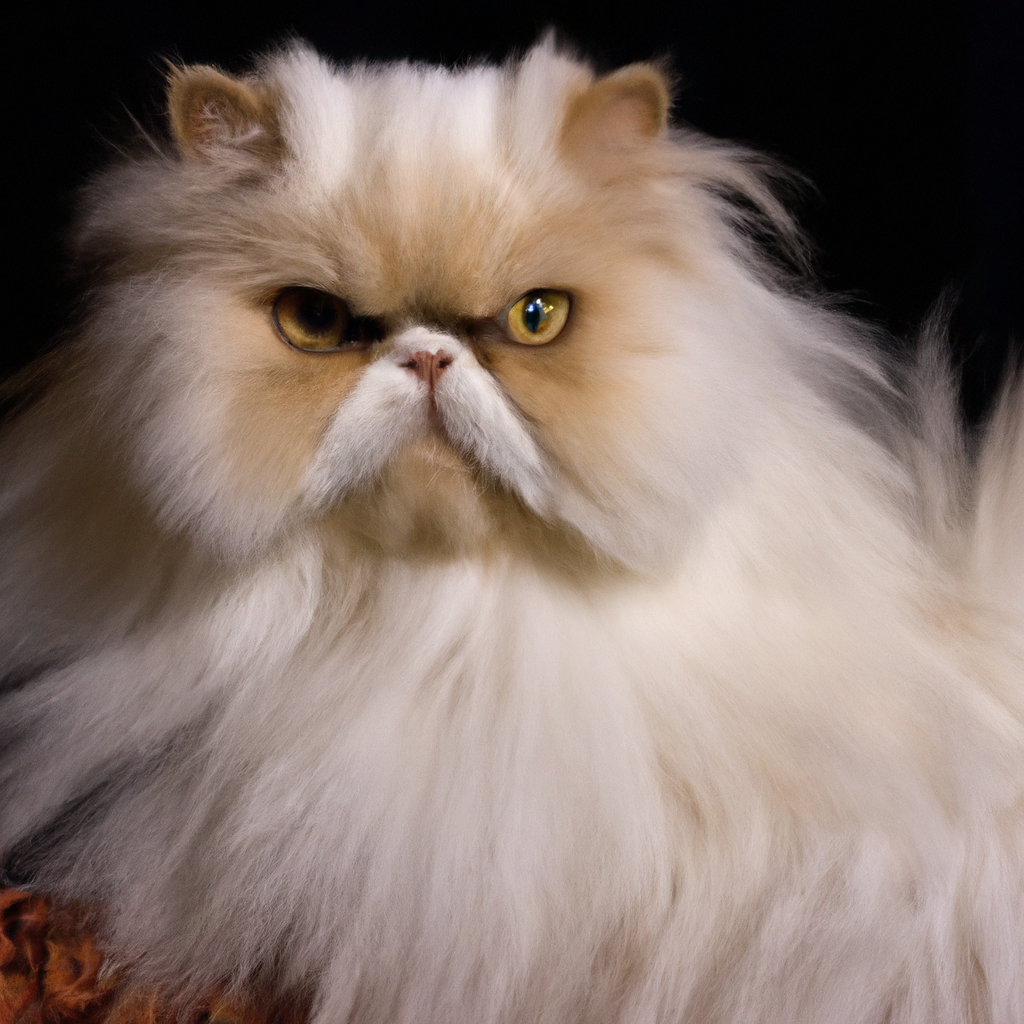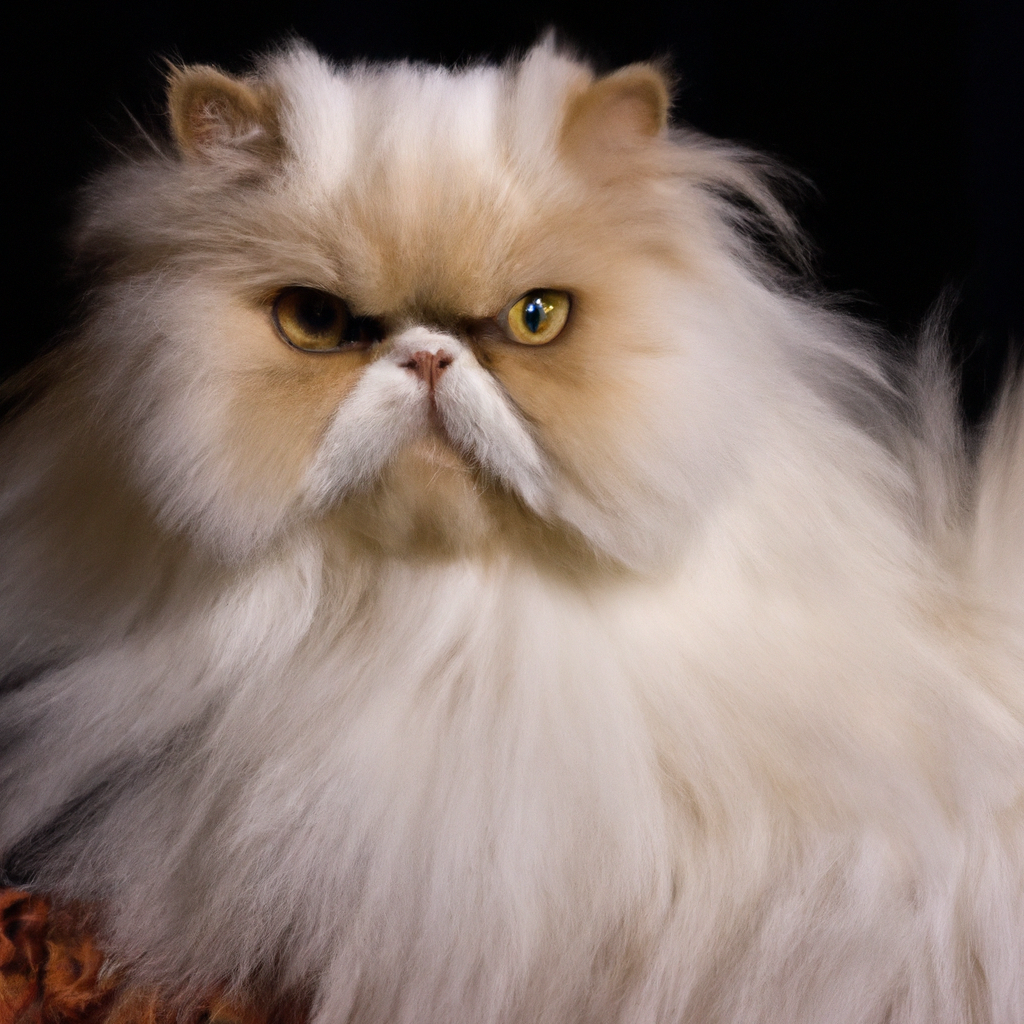Imagine yourself in a world where elegance and grace roam freely on furry paws. Picture a creature so enchanting, with a flowing mane that exudes sophistication and charm. Enter the world of long-haired Persian cats, where their majestic beauty takes hold of your heart and never lets go. These regal felines are a true symbol of grace, captivating both your eyes and soul with their luxurious coats and mesmerizing eyes. Step into the realm of these exquisite creatures and let yourself be captivated by the loveliness of long-haired Persian cats.
The History of Persian Cats
Ancient Origins of Persian Cats
The history of Persian cats dates back thousands of years to ancient Persia, now modern-day Iran. These elegant felines have a rich and fascinating past, believed to have been bred for their long, luxurious coats by ancient Persian royalty. It is said that these cats were held in high regard by the Persian aristocracy and were selectively bred to enhance their beauty and elegance.
Introduction to Persia and the Royal Family
In ancient Persia, cats were not only revered for their physical beauty but also for their mystical qualities. They were believed to possess supernatural powers and were often associated with good luck and protection. The royal families of Persia adored these regal creatures and adorned their palaces with them. Persian cats became a symbol of opulence and prestige, representing the affluence and grandeur of the Persian empire.
Persian Cats’ Journey to Europe
It was during the 17th century that Persian cats found their way to Europe, thanks to traders and explorers who were captivated by their exquisite beauty. European nobility quickly fell in love with these charming felines, appreciating their elegance, calm demeanor, and captivating eyes. The arrival of Persian cats in Europe marked the beginning of their popularity as beloved pets and show cats.
Distinctive Features of Long-Haired Persian Cats
Silky and Luxurious Coat
The most notable feature of long-haired Persian cats is undeniably their luxurious coat. Their fur is incredibly soft, silky, and voluminous, making them one of the most visually stunning cat breeds in the world. The coat of a Persian cat requires regular grooming and special care to keep it in prime condition.
Various Coat Colors and Patterns
Long-haired Persian cats come in a wide range of coat colors and patterns, providing endless options for potential owners. From solid colors like white, black, or blue to delightful patterns like tabby, tortoiseshell, or calico, there is a Persian cat to suit every taste. Their coat variations make them a captivating breed that stands out in any room.
Unique Facial Structure
One of the most distinctive features of long-haired Persian cats is their unique facial structure. They have a round, adorable face with large, expressive eyes and a short nose. This facial structure is called “brachycephalic” and is a defining characteristic of the breed. Their charming and somewhat smushed face is part of what makes them irresistibly cute.

Grooming Long-Haired Persian Cats
Daily Brushing: Essential for Maintenance
Grooming is an essential part of caring for a long-haired Persian cat. Daily brushing is necessary to keep their lengthy and dense fur free from mats and tangles. By establishing a regular brushing routine from a young age, you can prevent the development of knots and keep your Persian cat’s coat looking healthy and beautiful.
Bathing and Coat Maintenance
In addition to regular brushing, bathing is crucial to maintain the cleanliness and health of a long-haired Persian cat. Bathing should be done on a regular basis, using cat-specific shampoos that are gentle on their sensitive skin. After bathing, thorough drying and brushing are essential to prevent damp fur, which can lead to matting and other skin issues.
Special Care for Long Coats
The long and luxurious coat of a Persian cat requires specific care to keep it in its best condition. Trimming the fur around the anus and between the paw pads is important to maintain hygiene and prevent fecal matter or debris from getting stuck. Additionally, keeping the fur on the face clean is vital to prevent tear staining and eye discharge.
Health and Care Tips for Long-Haired Persian Cats
Preventing Fur Matting and Tangling
Proper grooming and regular brushing are fundamental to preventing fur matting and tangling in long-haired Persian cats. Mats can cause discomfort and pain for your feline friend, so it is essential to check their coat regularly and remove any knots or tangles gently. If matting becomes severe, it may require the assistance of a professional groomer or vet.
Eye and Ear Care
The unique facial structure of long-haired Persian cats requires special attention to their eyes and ears. Their large, beautiful eyes are prone to watering and tearing, leading to tear stains and potential infection. Regular cleaning and wiping the eye area are necessary to keep it clean and free from residue. Additionally, their ears should be checked regularly for any signs of infection or excessive wax build-up.
Oral Hygiene
Dental care is crucial for the overall health and well-being of long-haired Persian cats. Their adorable, smushed faces often result in overcrowded or misaligned teeth, making them more susceptible to dental issues. Establishing a regular dental care routine, including brushing their teeth and providing dental treats or toys, can help prevent dental problems and ensure their oral hygiene.

Long-Haired Persian Cat Personality Traits
Regal and Calm Demeanor
Long-haired Persian cats have a regal and calm demeanor that matches their elegant appearance. They exude an air of sophistication and grace, making them the epitome of a noble companion. Persian cats are known for their tranquil nature and are often found lounging in luxurious comfort. Their serene presence brings a soothing ambiance to any household.
Playful and Affectionate Nature
Beneath their calm exterior, long-haired Persian cats also possess a playful and affectionate nature. They enjoy interactive play sessions and are quite adept at amusing themselves with toys or objects around the house. Despite their independent streak, Persians thrive on human companionship and genuinely enjoy curling up on your lap for cuddles and affection.
Adaptability to Living Conditions
Long-haired Persian cats are remarkably adaptable to various living conditions, making them suitable pets for different households. Whether you live in a spacious house or a cozy apartment, these felines will find contentment as long as their basic needs are met. They are generally not overly demanding and are content with a peaceful and loving environment.
Living Arrangements for Long-Haired Persian Cats
Indoor Living: Ensuring Safety and Comfort
Due to their luxurious coat and calm temperament, long-haired Persian cats are best suited for indoor living. They are not particularly fond of adventurous outdoor escapades and should be kept indoors to protect their coat from dirt, parasites, and potential hazards. Creating an enriched indoor environment with ample hiding spots, scratching posts, and interactive toys will provide them with a fulfilling and secure living arrangement.
Creating a Cat-Friendly Environment
To ensure the well-being of a long-haired Persian cat, it is essential to create a cat-friendly environment within your home. This includes providing comfortable resting areas, such as plush beds or cozy blankets, and setting up vertical spaces for climbing and exploring. Persian cats also appreciate quiet and peaceful spaces where they can retreat for some undisturbed relaxation.
Understanding Exercise Needs
While long-haired Persian cats are not as energetic as some other cat breeds, they still require regular exercise to maintain a healthy weight and mental stimulation. Interactive play sessions using toys, feathers, or laser pointers can entice them to engage in physical activity. However, it’s important not to overexert them, as their brachycephalic facial structure can make it more challenging to regulate their body temperature.
Feeding and Nutrition for Long-Haired Persian Cats
Importance of a Balanced Diet
Proper nutrition is crucial for the overall health and well-being of long-haired Persian cats. They require a balanced diet that includes high-quality protein, essential vitamins, and minerals to support their growth and maintain their luxurious coat. Consult with your veterinarian to determine the appropriate feeding schedule and choose a premium cat food that meets their specific nutritional needs.
Recommended Food Types
Long-haired Persian cats are prone to dental issues, so it’s beneficial to provide them with a combination of wet and dry cat food. The wet food helps prevent dehydration and contributes to their daily water intake, while the kibble aids in maintaining dental health through chewing. It is essential to monitor their weight and adjust their portion sizes accordingly to prevent obesity.
Managing Weight and Portion Control
Maintaining a healthy weight is vital for long-haired Persian cats to prevent various health issues, including joint problems and obesity-related conditions. Portion control is key when it comes to feeding these felines, as they have a tendency to overeat. Spread their food throughout the day in small portions, and make sure not to give them excessive treats or table scraps.
Long-Haired Persian Cats and Children
Suitability as Family Pets
Long-haired Persian cats can make wonderful family pets, but it’s important to consider their temperament and needs before introducing them into a household with children. Their calm and gentle nature often makes them well-suited for families, especially those with older children who can understand and respect the cat’s boundaries.
Teaching Kids to Handle and Interact with Persians
It’s crucial to educate children about how to handle and interact with long-haired Persian cats to ensure a safe and harmonious relationship. Teach children to approach the cat calmly and gently, avoiding sudden movements or loud noises that may startle the feline. Show them how to properly pet and hold the cat, supporting its body and avoiding any rough play.
Educating Children about Cat Safety
Part of responsible pet ownership entails teaching children about cat safety, including the importance of not bothering the cat while eating or sleeping and avoiding pulling its fur or tail. Children should also be educated about recognizing signs of stress or discomfort in the cat, such as flattened ears, flicking tail, or hissing, and how to give the cat space when needed.
Showing and Competing with Long-Haired Persian Cats
Persian Cat Breed Standards in Shows
For those passionate about showcasing the beauty and elegance of long-haired Persian cats, participating in cat shows can be an exciting endeavor. These competitions adhere to breed standards established by cat organizations, which outline the ideal characteristics and specific traits that Persian cats should possess. Familiarize yourself with these breed standards before showcasing your Persian cat.
Preparing for Cat Shows
Preparing a long-haired Persian cat for a cat show requires meticulous grooming and presentation. This includes regular brushing to maintain their coat’s condition, carefully trimming their nails, and cleaning their ears and eyes to ensure a polished appearance. Additionally, it’s important to familiarize your Persian cat with the show environment and handling to reduce stress during competitions.
Participating in Competitions
Cat shows provide a wonderful platform for long-haired Persian cats to demonstrate their beauty and charm. Participating in competitions not only allows cat owners to showcase their furry companion but also provides an opportunity to meet other passionate cat enthusiasts. It’s essential to approach these competitions with a sense of fun and camaraderie, as the primary goal is to celebrate and appreciate the remarkable qualities of Persian cats.
Rescue and Adoption of Long-Haired Persian Cats
Understanding the Need for Adoption
Rescue and adoption are vital for long-haired Persian cats in need of a loving and caring home. Unfortunately, some Persian cats may find themselves in shelters or rescue organizations due to various circumstances, including changes in their owner’s lifestyle or health. By adopting a rescued Persian cat, you offer them a second chance at a happy life while also experiencing the joy of pet companionship.
Finding a Reputable Rescue Organization
When considering the adoption of a long-haired Persian cat, it is crucial to find a reputable rescue organization with a track record of ethical practices and proper care for the cats. Research local rescue groups or shelters that specialize in Persian cats, ensuring they prioritize the health, well-being, and long-term placement of their rescued felines.
Adopting and Caring for a Rescued Persian Cat
Adopting a rescued Persian cat requires patience, understanding, and commitment. These cats may have experienced trauma or neglect, so it’s important to provide them with a safe and nurturing environment. Understand that it may take time for a rescued Persian cat to acclimate to its new surroundings and to build trust. Offering gentle and consistent care will help create a strong bond and allow them to flourish in their new forever home.
In conclusion, long-haired Persian cats have a captivating history and possess distinct features that make them truly enchanting companions. Their regal and calm demeanor, combined with their playful and affectionate nature, make them a perfect addition to a variety of households. Whether showing them off in competitions or providing a loving forever home through adoption, long-haired Persian cats are truly a treasure in the feline world.
